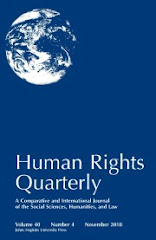This essay reviews Eric Posner’s and Alan Sykes’ Economic Foundations of International Law. In the last ten years or so, economic analysis of international law has established itself as a mainstream discipline, providing insights into why international law is structured as it is, the conditions under which it is effective, and how it might be improved. Economic Foundations consolidates and extends these insights. As such, the book is destined to be a starting place for economic analysis of international law. The book is divided into five parts. Part I provides an introduction to international law and the tools necessary to the economic analysis of it. Part II applies these tools to the background institutions of international law, including chapters on treaties, customary international law, international institutions, and the relationship between domestic and international law, among others. Parts III (“Traditional public international law”, IV (“The Environment”), and V (“International Economic Law”) apply the economic framework to substantive areas of the law, including chapters on investment law, trade law, international criminal law, human rights, and the law of the sea.
Given the book’s admirable breadth, no single review can do justice to it. In this essay, I focus primarily on the economic analysis of international lawmaking. The book gives the conventional account of international lawmaking, describing and analyzing the creation of law through three distinct pathways: custom, treaties, and international institutions. The book does an excellent job of applying economic analysis to these traditional modes of lawmaking. At the same time, international lawmaking has changed dramatically in recent decades. Economic analysis can shed light on these new patterns of lawmaking as well. For example, customary international law is no longer formed only through bilateral or mini-lateral interactions among states that give rise to unwritten precedent. States regularly use treaties and international institutions to codify or declare the content of customary international law, a form of universal lawmaking amenable to economic analysis. Similarly, the distinction between treaties and international institutions is increasingly artificial. Today, most major multilateral treaties are negotiated within institutions, such as diplomatic conferences or Conferences of the Parties to a framework convention, that resemble legislative bodies. These institutions rarely have the ability to enact binding law directly, and so Posner and Sykes do not consider them “legislatures.” Yet, like domestic legislatures, they operate under procedural rules that structure negotiations and they adopt draft instruments that may become binding law. New institutional economics can explain this shift towards legislative institutions as the principal way to structure multilateral negotiations. Specifically, procedures like adoption — in which an institution’s members must collectively approve a legal instrument before any subset of its members may individually choose to be bound by it — create holdup power which states can use to enforce “vote-trading” agreements that span multiple negotiations.
Monday, March 3, 2014
Meyer: Book Review, Economic Foundations of International Law, by Eric A. Posner and Alan O. Sykes
Timothy Meyer (Univ. of Georgia - Law) has posted Book Review, Economic Foundations of International Law, by Eric A. Posner and Alan O. Sykes (American Journal of International Law, forthcoming). Here's the abstract:





